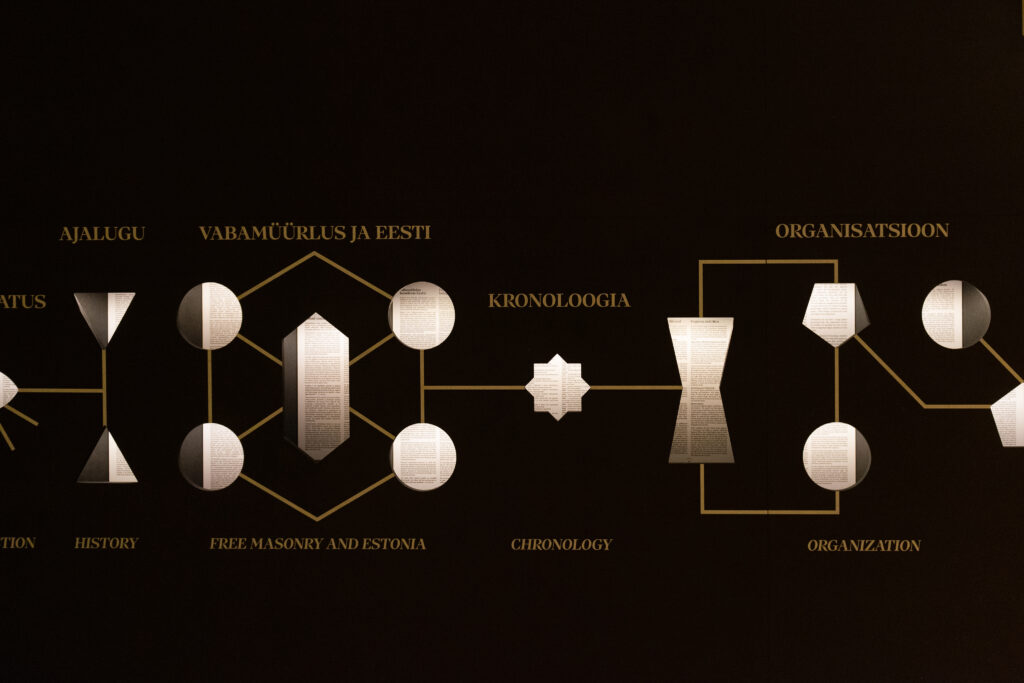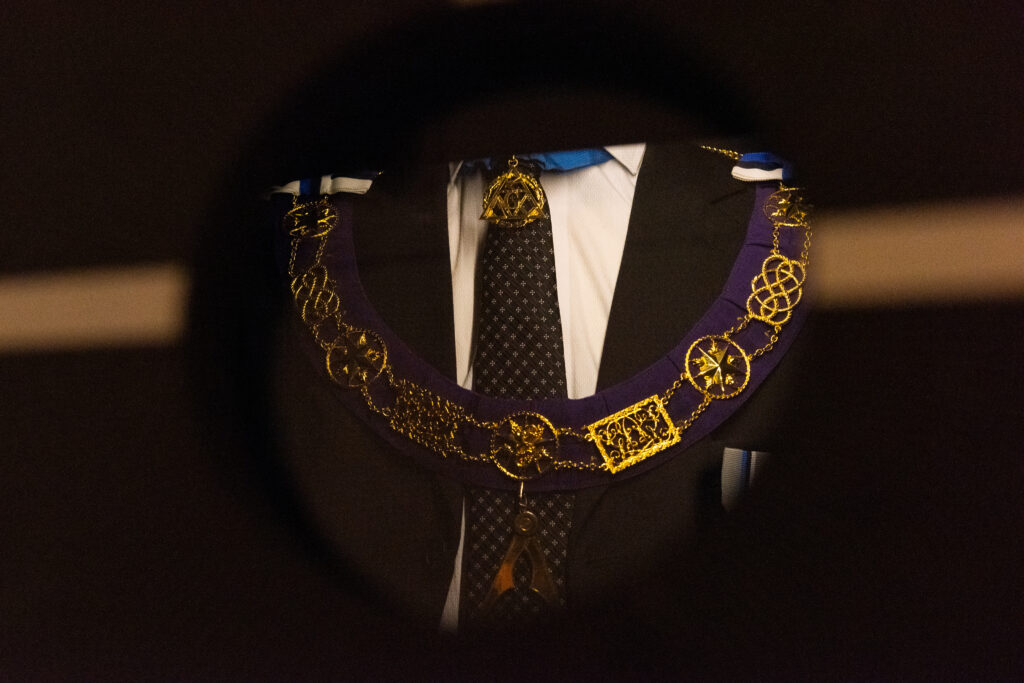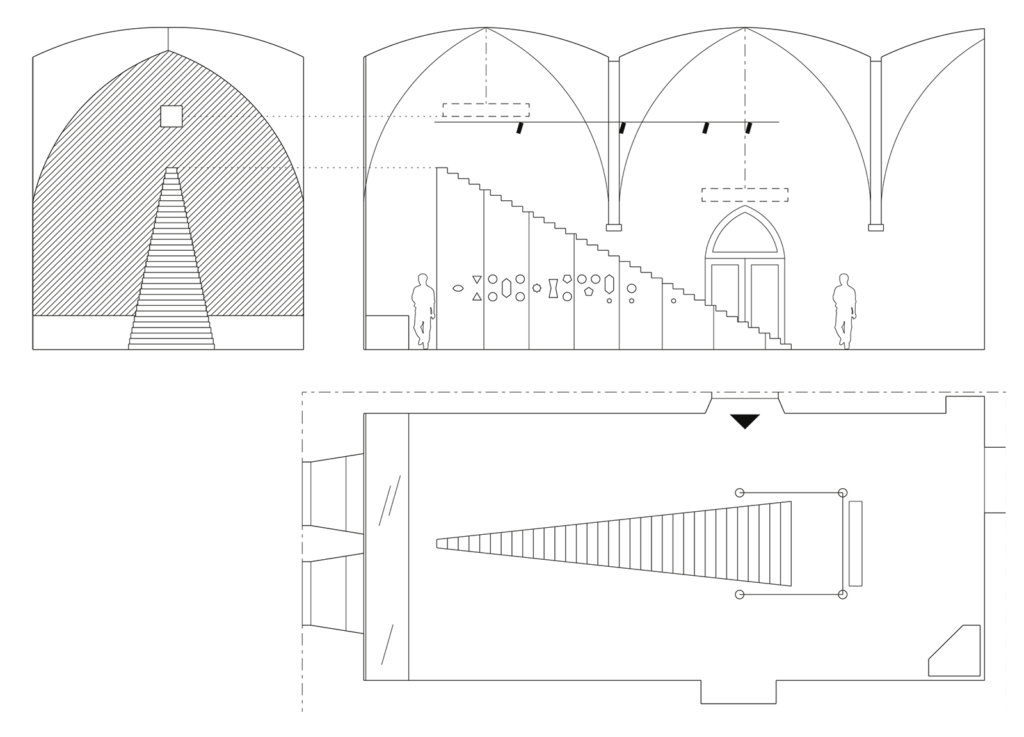The exhibition’s interior architecture was dictated by the exhibition space. Massive chandeliers in the ceiling, wrought iron, mural paintings, frescoes… The problem was how to get the exhibition to stand out in an historical environment so that it would not just be drowned out. Additional restrictions were imposed by the fact that nothing was allowed to be mounted on the walls or ceiling. It seemed that the interior with its powerful associations craved something in the middle.
The exhibition theme itself suggested a motif for the interior architecture. Namely, a 33-step staircase is central to the rich symbolic world of the Freemasons. The illuminated staircase makes a powerful incision in the space, giving a strong introductory note to the entire exhibition. And thus the exhibition coalesced around the stairs, which also serve as a showcase. To keep from overburdening the interior, only one long display case containing valuable items was added along the end wall. Since very little could be displayed there, only the most striking items were chosen.
The niche under the stairs was like someone’s home storage closet. There were a number of peep-holes, through which Freemason graphics and garments could be viewed. The solution characterizes the relevant themes well, exposing and yet leaving much concealed. The sense of mystery is preserved. Visitors should need to make a little effort, not everything should be plain to them right away.
In some sense it is extraordinary that there is not a single screen or button here except for the light switch. Maybe that will discipline the viewer to take an even more in-depth approach.
The black and white chequered floor is a laden symbol, referring to the Lodge and the battle of good against evil. Visually, it adds surrealism to the hall, and also ties the stair to the rest of the space. In this way, the whole room becomes like a platter on which the exhibition is served.

















































































































































































































